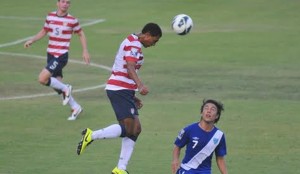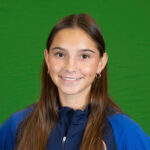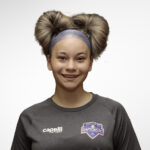Does heading a soccer ball really lead to brain injury?

Don’t believe everything you read. Now THERE’S an ironic statement coming from the person who wrote what you’re reading right now. But let’s be honest. We are getting pitiful grades in the critical reading section. You remember: the part of class where you read the passage and answer the questions. We don’t read the passage any more.
There is so much information coming our way that we skim the titles, click on the ones that grab us, read the stuff in bold print, maybe look at the pictures and if it’s really good, we scan the bullet points. We don’t read for comprehension. We read for speed.
For instance, what if we read: “Heading a soccer ball linked to brain injury”?
Especially if there is emotion wrapped up in the question – perhaps we have had a concussion, our kid has had one or several, or we have a friend, a teammate or a player who has suffered one – we panic. And we click. But, instead of reading critically, we read to find out why “heading is linked to brain injury?”
We figure, it’s in the headline, it must be true. We give the author an awful lot of credit. Even if we don’t know his or her credentials.
Studies show, the more times we read something the more likely we are to believe it AND the more likely we are to tell others that we “know” it. And we are most likely to read based on:
- How sensational it is
- How catchy the headline is
- How many news-providing devices we have
- Who we “follow”
- Who our friends are.
Because all of those decide how many times it will be shared. Clicks and shares are considered evidence and support. They’re not. Can we take a minute to remember our critical reading skills?
Reading critically means to ask questions of the proposition being shared and the conclusion drawn.
- What’s the premise and how is it tested?
- Who are the subjects? How many? What age, gender, etc? Under what conditions?
- How did they measure the proposed variable? Did they control other variables?
- Did they do any statistical analysis?
- Is there any bias? Does the experimenter alter the data collected by their method, sampling, testing or evaluation?
- Is the conclusion valid? That is, is it supported by the data?
- Is the article published in a refereed journal? That means that people who work in this science have read and considered all the bullet points above and more. A good help to the casual reader, but those journals are heavy reading.
So, remember all that experimental design hogwash back in high school that you thought only scientists needed? You were wrong. Today we all need it, because, thanks to the information age and internet resources, anyone can put things in print. We need to read critically now more than ever. So we don’t react with knee-jerk panic. We need to take a considered approach and decide what to believe based on the evidence, not the emotional appeal.
We need to read critically. Our best bet is the original science if we really want the truth, and even that we read critically. That’s what I strive to do and present to you here. As I scan an article in a professional Radiology newsletter entitled Imaging Sheds New Light on Concussion Consequences, I was surprised to read this sub-heading: “Heading a soccer ball linked to brain injury.”
Emotional super-charge, all engines kick in. So I go back and read critically. Michael Lipton, MD, PhD, researcher at Albert Einstein College of Medicine and director of MR Imaging at Montefiiore Medical Center in New York City, has presented data showing that heading a soccer ball was associated with changes in brain structure and function similar to those in mild TBI (traumatic brain injury).
 In this research he studied amateur soccer players (average age 30.9 years old) using a technology called diffusion tensor imaging, a radiological technique which can measure the movement of water molecules within and along axons in the bundles of brain white matter thought to experience disruption in concussive injury.
In this research he studied amateur soccer players (average age 30.9 years old) using a technology called diffusion tensor imaging, a radiological technique which can measure the movement of water molecules within and along axons in the bundles of brain white matter thought to experience disruption in concussive injury.
He found significant differences between the brains of the groups that headed the ball most frequently and the remaining players. He even localized the region most likely to be affected to the temporooccipital regions (side and back of brain), where visuo-spatial attention and memory functions reside. These are symptoms of concussion. It all makes sense; you start to believe.
Then, the next headline in the article: “Threshold Effect Key to Research.” Dr. Lipton himself says the key finding in his work is the evidence of this: “Players with fewer than 800 headers over the prior 12 months DIDN’T have elevated risk for either brain changes or cognitive effects.”
So, what do we know?
- Researchers are doing lots of research on brains and contact sports.
- They have developed a specialized kind of MRI technique to measure and locate brain changes, but this is not your typical MRI or CT scan. (Not one that would be ordered for you in your local Emergency Room.)
- Performing over 800 headers in a year seems to affect brain function in 31-year-olds.
- Performing under 800 headers in a year doesn’t cause these changes in 31-year-olds.
What do we need to know?
- What kind of headers? What balls? What head surface?
- Were other impacts counted?
- What is the effect over time?
- What is the effect on young players?
- More…
What do we do?
Everyone is concerned about keeping kids safe. But reading the blogs with the panic button nearby has us reacting rather than studying and preventing. We can do several things with our anxiety:
- Sit and fret
- Blame and sue
- Pull our kids out of the sports they love
- Or we can read critically, and then take action against this injury which is ravaging the ranks of youth football and soccer.
Which means we study, measure…and take precautions. As a professional in the injury prevention business, I contend that injury prevention and sport can co-exist. We have to be smart about both.
But as responsible adults in the soccer community, we all need to read the fine print. We must know who wrote the articles, who did the work and what their credentials are. Please keep an eye out for the sensational headline and treat it with caution. It wants you to click. In fact, it’s messing with your brain.
Don’t let it.
SOCCERWIRE MARKETPLACE
- visitRaleigh.com Showcase Series 2025, hosted by NCFC Youth
- OFFICIAL MANCHESTER CITY SOCCER CAMPS
- Wanted Licensed Youth Soccer Coach
- Join Official Elite Summer Soccer Camps with Europe’s Top Pro Clubs!
- The St. James FC Travel Staff Coach - North (Loudoun) & South (Fairfax)
- The St. James FC Girls Academy (GA) Head Coach - 2 teams
- The St James FC Boys Travel Tryouts
- OFFICIAL BAYERN MUNICH SUMMER CAMPS U.S.
- JOIN THE ALLIANCE!
- OFFICIAL FC BARCELONA CAMPS U.S.











